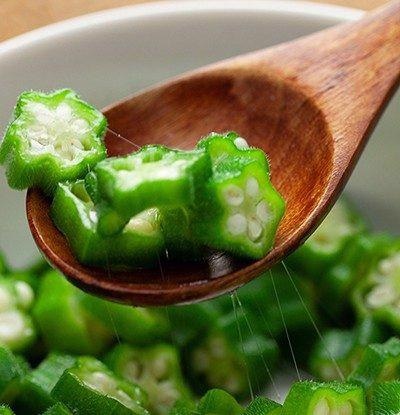In a number of cuisines, okra is used as a key thickener of soups and stews. The sticky stuff from that fruit and other plants like cactus, aloe and psyllium, can also be used to clean water and wastewater of certain kinds of solid contaminants, as well as some pollutants that are dissolved.
 Polysaccharide extracts from slimy okra and other plants could rid water of microplastics. Image Credit: decoplus/Shutterstock.com
Polysaccharide extracts from slimy okra and other plants could rid water of microplastics. Image Credit: decoplus/Shutterstock.com
Currently, scientists have shown that mixtures of these food-grade plant extracts can eliminate microplastics from wastewater.
The scientists showcased their results at the spring conference of the American Chemical Society (ACS). ACS Spring 2022 is a hybrid conference being held in-person and virtually between March 20th and 24th, with on-demand access available between March 21st and April 8th. The meeting covers over 12,000 presentations on a broad range of science subjects.
The health impacts of consuming microplastics — minute pieces of plastic 5 mm or smaller — are presently unclear, but studies reveal that people inadvertently consume tens of thousands of these particles each year.
We think that microplastics by themselves may not be much of a health hazard, but anything that they get into or any type of toxic substance that gets attached to these plastics could go inside our bodies and cause problems.
Rajani Srinivasan, Ph D., Project Principal Investigator, Tarleton State University
In the standard wastewater treatment method, microplastics are eliminated from water in two steps. In the first step, microplastics that float are just skimmed off the surface of the water. Nevertheless, this step only eliminates a fraction of all the microplastics that are in the water.
The rest must be eliminated by incorporating flocculants, or sticky chemicals that draw microplastics and form big clumps. The clumps then drop to the bottom of the water and can be removed from it.
Srinivasan, from Tarleton State University, highlights that a few of the substances presently used to eliminate contaminants are potentially unsafe, so she and her colleagues have been examining nontoxic substitutes. For example, one typical flocculant, polyacrylamide, can break down into poisonous chemicals under certain circumstances.
It doesn’t help if we try to clean up water but add potentially toxic substances to remove the pollutants.
Rajani Srinivasan, Ph D., Project Principal Investigator, Tarleton State University
Earlier, Srinivasan had examined the use of food-grade plant extracts as nonhazardous flocculants to eliminate textile-based contaminants from wastewater. Her team explicitly concentrated on polysaccharides in the extracts since these biopolymers contain the suitable biological and chemical properties to draw and capture pollutants such as dyes or even bacteria.
I was working with the removal of microorganisms and things like that, and I thought, ‘Why not try microplastics?’
Rajani Srinivasan, Ph D., Project Principal Investigator, Tarleton State University
Therefore, the team of undergraduate and master’s students examined polysaccharide extracts from cactus, fenugreek, aloe vera, tamarind, okra and psyllium — all items were food-grade materials — as flocculants to trap microplastics. They examined compounds from the individual plants, as well as in various combinations.
To achieve this, they incorporated these extracts into different water sources that contained microplastics. Then, they analyzed microscope images of the flocculant clumps pre- and post-treatment and totaled the microplastics to establish the number of particles that had been eliminated.
Through their experiments, the scientists discovered that polysaccharides from okra coupled with those from fenugreek could ideally eliminate microplastics from marine water, whereas polysaccharides from okra coupled with those from tamarind functioned best for freshwater samples.
On the whole, the plant-based polysaccharides functioned better than, or as well as, the conventional flocculant polyacrylamide, conditional on the mixture of extracts and water source.
Notably, the plant-based flocculants can be executed in current water treatment processes.
The whole treatment method with the nontoxic materials uses the same infrastructure. We don’t have to build something new to incorporate these materials for water treatment purposes.
Rajani Srinivasan, Ph D., Project Principal Investigator, Tarleton State University
Going forward, she and her colleagues will continue tweaking the ratios and mixtures of plant-based flocculants to enhance the elimination of many microplastic types from a range of water sources, like marine water, freshwater, estuary water and groundwater. They also hope to expand their nontoxic microplastic elimination process in field studies beyond the lab.
Eventually, they anticipate commercializing this new, plant-based process so that microplastics can be eliminated from water on an industrial scale — facilitating cleaner and safer water for all to drink.
The scientists acknowledge funding and support from the National Science Foundation (award number 1658984), Tarleton State University, and the High Plains Water Development District in Lubbock, Texas.